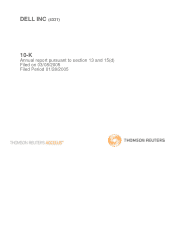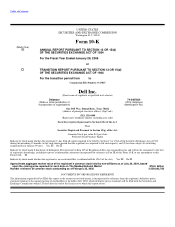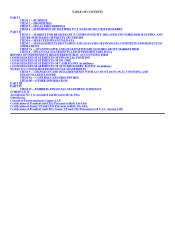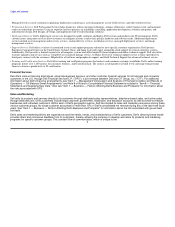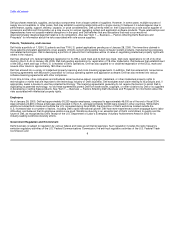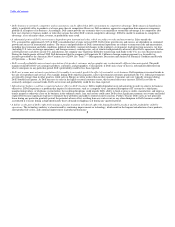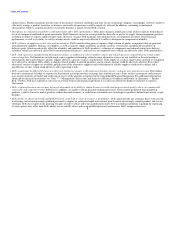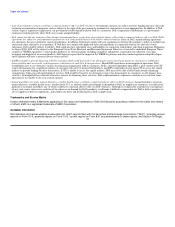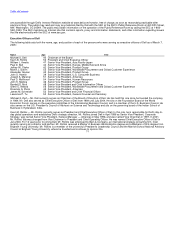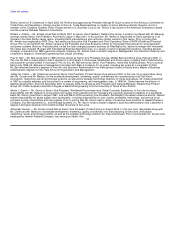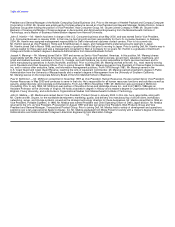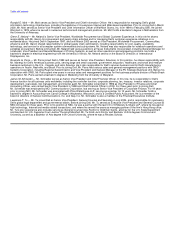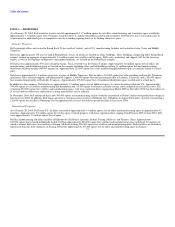Dell 2004 Annual Report Download - page 8
Download and view the complete annual report
Please find page 8 of the 2004 Dell annual report below. You can navigate through the pages in the report by either clicking on the pages listed below, or by using the keyword search tool below to find specific information within the annual report.
Table of Contents
direct business model, also allows Dell to rapidly gauge customer satisfaction and target new or existing products.
For large business and institutional customers, Dell maintains a field sales force throughout the world. Dedicated account teams, which include
field-based system engineers and consultants, form long-term relationships to provide our largest customers with a single source of assistance
and develop specific marketing programs for these customers. For large, multinational customers, Dell offers several programs designed to
provide single points of contact and accountability with global account specialists, special global pricing, consistent service and support
programs across global regions, and access to central purchasing facilities. Dell also maintains specific sales and marketing programs targeted
at federal, state, and local governmental agencies as well as specific healthcare and educational markets.
Dell markets its products and services to small-to-medium businesses and consumers primarily by advertising on television and the Internet,
advertising in a variety of print media, and by mailing a broad range of direct marketing publications, such as promotional pieces, catalogs, and
customer newsletters. In certain states as well as non-U.S. locations, Dell also operates Dell Direct Stores, which are kiosks typically located
within shopping centers, that allow customers to view Dell products in person and purchase online from Dell with the assistance of a Dell
expert.
Competition
The market for computer systems and services is subject to intense price competition. In addition to several large branded companies, there
are other branded and generic competitors. Dell competes primarily based on its technology, direct customer relationships, value, performance,
customer service, quality, and reliability. Dell's general practice is to aggressively pass on cost declines to its customers in order to enhance
customer value while increasing global market share. Dell expects that the competitive pricing environment will continue to be challenging, and
Dell expects to continue to reduce its pricing as necessary in response to future competitive and economic conditions. However, Dell believes
that the strength of Dell's direct business model, as well as its strong liquidity position, makes the company better positioned than its
competitors to continue profitable growth in any business climate. See "Item 1 — Business — Factors Affecting Dell's Business and Prospects"
for information about the risks associated with competition.
Manufacturing and Materials
Dell manufactures most of the products it sells and has manufacturing locations worldwide to service its global customer base. See "Item 2 —
Properties" for information about Dell's manufacturing locations. Dell believes that its manufacturing processes and supply-chain management
techniques provide it a distinct competitive advantage. Its build-to-order manufacturing process is designed to allow Dell to significantly reduce
cost while simultaneously providing customers the ability to customize their product purchases. In addition, Dell purchases some of its products
from third-party original equipment manufacturers and resells them under the Dell name.
Dell's manufacturing process consists of assembly, software installation, functional testing, and quality control. Testing and quality control
processes are also applied to components, parts, and subassemblies obtained from third-party suppliers. Quality control is maintained through
the testing of components, subassemblies, and systems at various stages in the manufacturing process. Quality control also includes a burn-in
period for completed units after assembly, on-going production reliability audits, failure tracking for early identification of production and
component problems, and information from Dell's customers obtained through services and support programs. Dell is certified, worldwide, by
the International Standards Organization to the requirements of ISO 9001: 2000. This includes the design, manufacture, and service of
computer products in all Dell regions. 5

